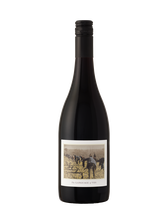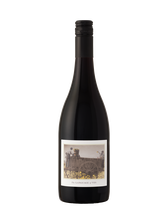The Language of Yes wines. Now available.
The Language of Yes Grenache 2020 750ML
2020 The Language of Yes Grenache, “En Passerillage”
Winemaking and élevage:
Grenache is said by some to resemble Pinot Noir, in so far as its need for gentle extraction and susceptibility to oxidation; the variety does not have the “density,” if you will, of more structured varieties such as Cabernet Sauvignon, thus any edges or flaws (such as astringency or bitterness) tend to stand out in greater relief. Since this vintage was the first time, I had the pleasure to work with grapes from the Rancho Réal Vineyard, it seemed useful to experiment with different approaches to phenolic extraction. We split the lot of grapes into two and adopted a punchdown regime with one and a pump-over regime with the other. The pump-over tank was initially more expressive than the punchdown one, but ultimately, I felt that the punchdown technique led to more structure and depth in the resultant wine. As with the Syrah, we allowed the Grenache grapes to air dry on paper mats for three days prior to re-collection, with the aim of lignifying stems and (pardon the anthropomorphism) allowing the grapes to recompose themselves prior to the onset of fermentation. The wine was aged in larger vessels to minimize the amount of oxygen ingress in its élevage.
Tasting Notes:
Medium healthy red color, with nary a sign of brown at the rim. Nose of strawberry/rhubarb and peach, with a possible suggestion of citrus, viz. blood orange. Definite notes of autumnal spice - cloves, allspice and hints of sandalwood or other scented candle one might find in the boudoir of an ageing hippie. Good volume on the palate: the wine seems to expand with exposure to air in the way that inspirational Pinot/Burgundy sometimes does. Not at all densely tannic, but extremely persistent on the palate. Contradicting all the received wisdom: Grenache is a grape capable of great elegance and complexity (as this wine shows) and one certainly destined to live for many years.
2020 The Language of Yes Syrah, “En Passerillage”
Winemaking and élevage:
We adopted the extremely non-standard practice air-drying the grapes post-harvest. The extremely mild climate of the Santa Maria Valley allowed us to dry the grapes al fresco in situ, gently placing the grapes on paper trays in the shade of the vine canopy. The intent was not so much to dehydrate the grapes (this does happen, to the tune of picking up perhaps one additional degree of alcohol), but rather to lignify the stems, in other words, turning them from slightly herbaceous “green” to sturdy, puissant, costaud brown. The vitaceous equivalent of lead in the pencil, as it were. We experimented with both punching down and pumping over, and found, as with the Grenache tanks, more immediate access to the wine through pumping over (possibly through greater exposure to oxygen) but ultimately a more complete and complex extraction with punching down.
Tasting Notes:
It is an established tradition, at least in Côte-Rôtie, to co-ferment Viognier with Syrah. This is said to enhance the aromatic potential (good!), the alcoholic degree (not so necessary in California), color stability and structure of the wine. The Viognier has added a unique floral note to the otherwise peppery Syrah. (It is important to note that the Santa Maria Valley is one of the climatically coolest sites in California where Syrah can be successfully grown, and enjoys perhaps the longest season. These are two important factors contributing to the formation of rotundone, the sesquiterpene molecule responsible for the peppery aroma in wine.) So, without further ado, the notes: As I’ve mentioned elsewhere, The Language of Yes project is not intended to try to slavishly replicate the wines of Southern France, but rather to seek to find and amplify the unique characteristics of our climats and terroirs in the Central Coast of California, (at the same time seeking inspiration from our Gallic equivalents.) Having said that, there is the most remarkable “taste-alike” correspondence between this wine and the Platonic goût de Provence - a singular ubiquitous balsamique (resinous) quality imparted some say by the local underbrush, the garrigue - lavender, rosemary and sage, notably - but perhaps also by proximal pine forest. In any event, the wine is marked by its lively acidity, vivid (let’s call it pink) pepperiness, with strong suggestion of black olive, violets, licorice and white flowers. On the palate, slightly angular immediately upon opening but softening considerably with time. The wine was not filtered and will greatly benefit from decanting and a healthy exposure to air.
The Language of Yes Syrah 2020 750ML

